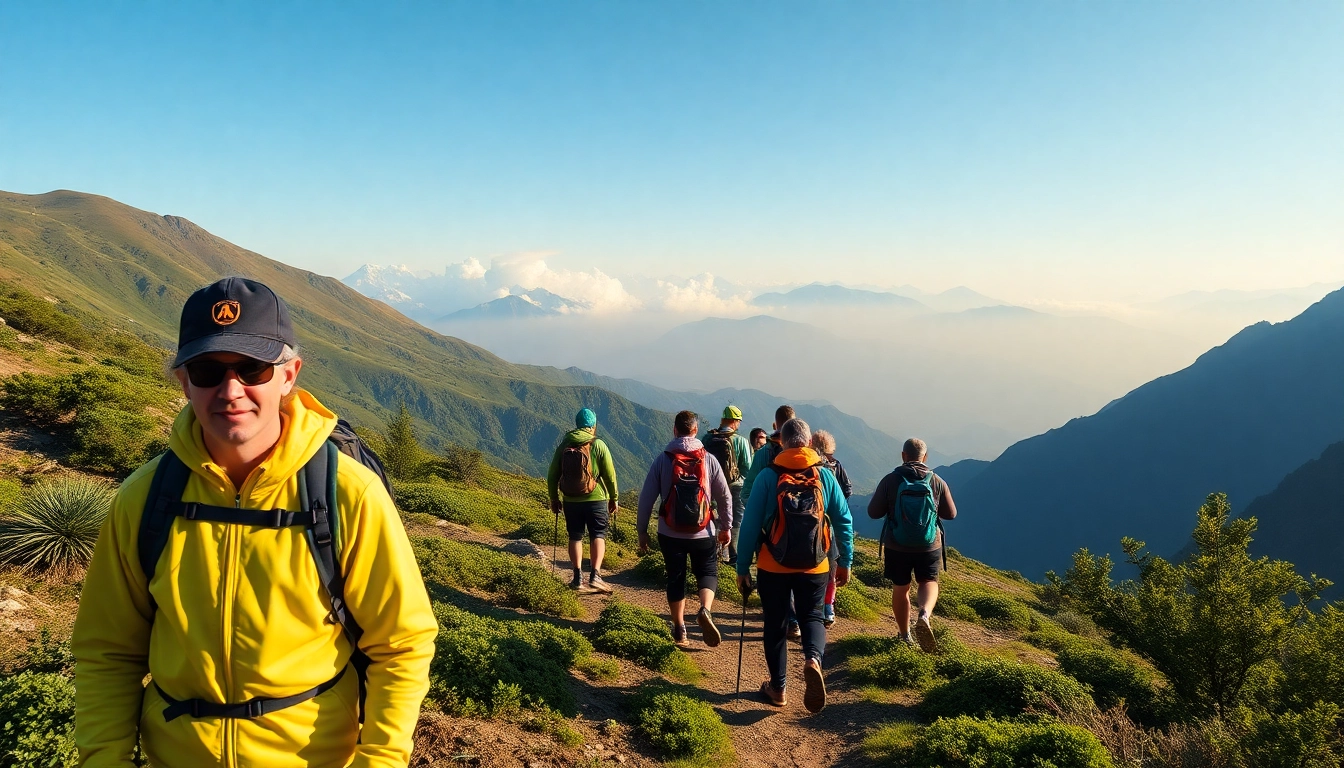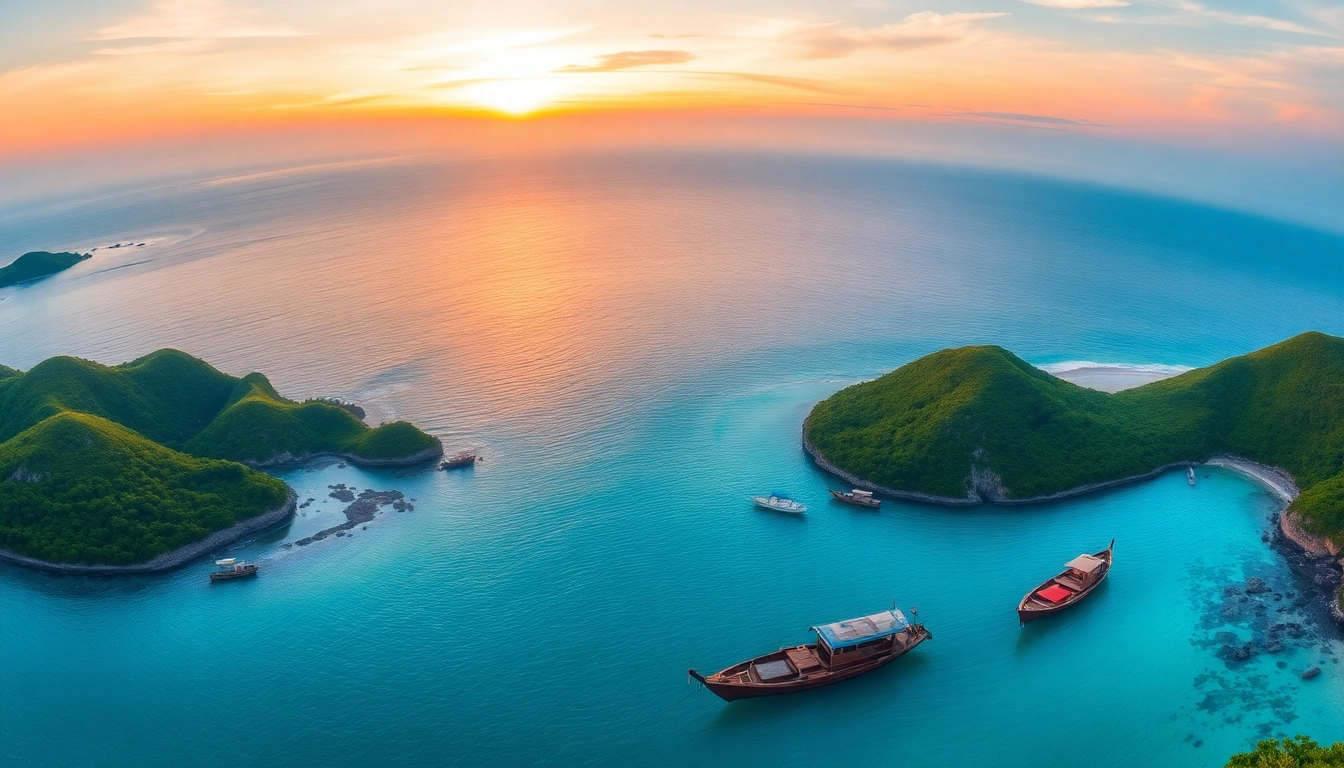7 Reasons a Guided Hike in Indonesia Elevates Your Adventure Experience
Understanding the Benefits of a Guided Hike in Indonesia
Embarking on a hiking adventure in Indonesia opens up a world of breathtaking landscapes, diverse ecosystems, and vibrant local cultures. Whether exploring volcanic peaks, lush rainforests, or secluded villages, hikers aspire for a safe, enriching, and memorable experience. This is where a guided hike becomes an invaluable choice. Guided hikes provide not only enhanced safety and convenience but also deep insights into the environment and local traditions, transforming an outdoor activity into a cultural and educational journey. In this comprehensive guide, we will explore the myriad benefits of choosing guided hikes in Indonesia, delve into the different types available, and provide practical tips to maximize your adventure.
What Defines a Guided Hike?
A guided hike is an organized outdoor activity led by a skilled and knowledgeable guide who directs the group along a designated trail. Unlike independent hiking, where individuals rely on maps or their own navigation skills, guided hikes involve a professional interpreter of the landscape, flora, fauna, and local customs. The guide serves as a mentor, safety officer, and storyteller, enriching the experience with insights that would be difficult to gather independently.
In Indonesia, guided hikes often encompass diverse terrains—from volcanic craters and jungle canopies to coastal trails and traditional villages. Guides are typically certified and experienced, possessing local knowledge about trail conditions, weather patterns, wildlife, and cultural significance. They also ensure adherence to safety protocols, minimize environmental impact, and facilitate interactions with local communities, offering an authentic and responsible travel experience.
How Guided Hiking Enhances Safety and Confidence
Safety is a paramount concern, especially in Indonesia’s often unpredictable wilderness. The rugged terrain, tropical climate, and remote locations pose challenges that may overwhelm unprepared hikers. Guided hikes mitigate these risks through professional oversight, real-time navigation, and first aid expertise.
Guides are trained to recognize potential hazards such as unstable volcanic slopes, flash floods, or encounters with wildlife. Their experience ensures timely decision-making, route adjustments, and the use of appropriate safety gear. Moreover, guides carry communication devices and emergency supplies, providing peace of mind to hikers.
Confidence levels also rise significantly when venturing into unfamiliar terrains. Guided groups benefit from the moral support, expert tips, and encouragement from guides, making challenging trails more accessible to hikers of various skill levels. As a result, more participants are empowered to explore remote and difficult destinations they might otherwise avoid.
This combination of safety and confidence encourages hikers to push their boundaries, learn new skills, and fully immerse themselves in the natural environment without undue worry.
Different Types of Guided Hikes Available in Indonesia
Mount Rinjani Trekking Tours
The ascent of Mount Rinjani, Indonesia’s second-highest volcano, is renowned among trekking enthusiasts. Guided Rinjani expeditions typically span 2-4 days and include acclimatization, summit attempts, and camping under the stars. Guides specialize in high-altitude trekking, ensuring safety during altitude sickness, steep sections, and unpredictable weather.
Jungle and Rainforest Walks in Bali and Lombok
Ngurah Rai Forest in Bali and the forests of Lombok offer guided walks through rich biodiversity. These eco-tours often focus on flora, fauna, and traditional uses of plants, led by guides familiar with local ecology and indigenous culture. They’re perfect for nature lovers and families seeking accessible yet educational experiences.
Remote Villages and Cultural Trails
Indonesia’s cultural tapestry is woven through its villages and traditional communities. Guided hikes here include visits to indigenous tribes, ancient temples, and markets. Such tours promote responsible tourism, support local economies, and foster cross-cultural understanding.
Coastal and Marine Hikes
Some guided tours extend to coastal regions, where hikers explore mangrove forests, pristine beaches, and coral reefs. With expert guides, participants learn about marine ecosystems, conservation efforts, and sustainable practices while enjoying spectacular ocean views.
Planning Your Guided Hike: Tips & Best Practices
Selecting the Right Guided Hike for Your Fitness Level
Indonesia offers hikes suitable for all fitness levels. When choosing a guided tour, consider the trail’s difficulty, elevation gain, distance, and expected physical demands. Clear communication with tour providers ensures your selected hike matches your fitness, experience, and expectations.
Choosing Licensed Guides and Reputable Tour Providers
Ensure your guide or tour operator holds proper licenses, certifications, and positive reviews. Reputable companies like those featured in trusted platforms adhere to strict safety standards, environmental conservation policies, and fair community engagement practices. Verify credentials and seek recommendations to avoid subpar experiences or safety risks.
Preparing for the Indonesian Wilderness: Packing Essentials
- Lightweight, moisture-wicking clothing suitable for tropical climates
- Sturdy hiking boots with good grip
- Sun protection—hat, sunglasses, and sunscreen
- Insect repellent and anti-itch creams
- Personal navigation tools (if self-guided), though guides typically provide maps
- Hydration system and high-energy snacks
- Basic first aid kit, including antiseptics and pain relievers
Effective preparation enhances safety and comfort, making your guided hike more enjoyable and less stressful.
Top Destinations in Indonesia for Guided Hiking Tours
Exploring Mount Rinjani with Expert Guides
Mount Rinjani National Park on Lombok Island features lush forests, hot springs, waterfalls, and the towering crater lake Segara Anak. Guided treks here are meticulously organized to ensure safety while allowing hikers to experience Indonesia’s volcanic majesty firsthand. Guides share insights into the geological history, local legends, and conservation efforts surrounding Rinjani, enriching your journey.
Wildlife and Forest Trails in Bali and Lombok
Bali’s primary forests and Lombok’s protected parks provide immersive wilderness experiences. Guided tours often include birdwatching, spotting native monkeys, and exploring sacred forests, all while learning about ecological preservation and local spiritual beliefs.
Remote Villages and Hidden Trails in Flores and Sumatra
In Flores, guided hikes lead through traditional villages like Bena or Wolowaru, where visitors witness ancestral lifestyles and crafts. Sumatra offers trail opportunities through unspoiled rainforests home to orangutans and other endangered species, with guides emphasizing conservation and responsible tourism.
Maximizing Your Adventure Experience
Engaging with Local Culture During Your Guided Hike
Indonesia’s diverse cultures can be experienced authentically through guided interactions. Guides often facilitate visits to local villages, markets, and cultural sites, explaining traditions, rituals, and histories. This cultural engagement deepens your connection to the land and its people, providing a meaningful dimension beyond outdoor exploration.
Photography Tips for Memorable Trekking Moments
Capture Indonesia’s vibrant landscapes with tips such as early morning or late afternoon lighting, using wide-angle lenses for expansive vistas, and setting the white balance to enhance natural colors. Ask your guide for preferred viewpoints or hidden gems that may be off the main trail for more exclusive shots.
Post-Hike Recovery and Shareability
Proper rest, hydration, and nutrition after your hike are vital for recovery. Sharing your experiences through photos, stories, and reviews not only preserves memories but also encourages responsible travel. Engaging with local communities respectfully and sustainably ensures benefits extend beyond your trip.
Comparing Guided Hikes to Independent Hiking in Indonesia
Cost, Convenience, and Support Differences
While independent hikes might seem more economical, they often lack the logistical support, safety assurance, and cultural insights that guided tours provide. Guided hikes include expert leadership, local permits, and sometimes all-inclusive packages covering transportation, accommodations, and meals, offering unmatched convenience.
Flexibility and Customization Options
Independent hikers retain full control over their routes, pace, and itinerary, which can be beneficial for seasoned explorers. Conversely, guided hikes can be customized within certain parameters, allowing for spontaneous detours, cultural visits, or rest days tailored to your interests and physical condition.
Ensuring a Responsible and Eco-Friendly Hike
Guides and reputable operators adhere to sustainable practices, minimize environmental footprints, and promote respect for local communities. Independent hiking requires careful planning to follow Leave No Trace principles and avoid unintentional harm to sensitive ecosystems.



